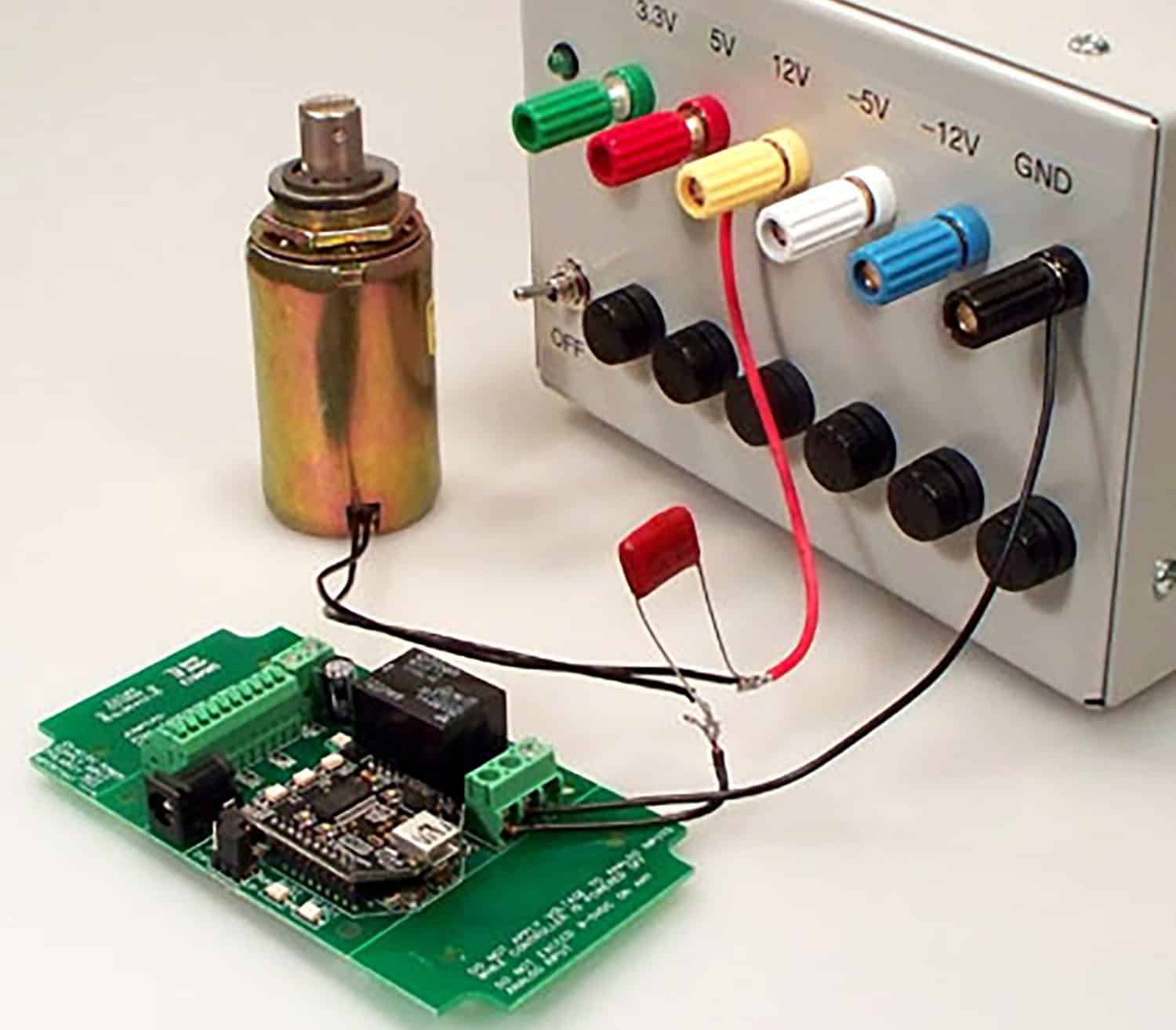Induction Suppression Capacitors
Capacitors at a Glance
- Required for Handling Inductive Loads
- Motors
- Solenoids
- Transformers
- Capacitor Absorbs the High Voltages
- Increase Lifespan of Relay
- Stops Interference of Microprocessor Logic
- Easy to Install
- Use with AC or DC Applications
- Not Required with Resistive Loads

Managing Electromagnetic Interference
Control Inductive Loads with a Induction Suppression Capacitor
Capacitor Absorbs the High Voltages Generated by Inductive Loads
A Capacitor Improves the Lifespan of the Relay and Reliability of the Board
Handling Inductive Loads
Perhaps the most overlooked aspect of relay control is proper handling of inductive loads. Inductive loads can best be defined as anything with a magnetic coil, such as a motor, solenoid, or a transformer. Controlling a inductive load using our relay controllers requires the use of induction suppression capacitors. The purpose of this capacitor is to absorb the high voltages generated by inductive loads, blocking them from the contacts of the relay. Without this capacitor, the lifespan of the relay will be greatly reduced. Induction can be so severe that it electrically interferes with the microprocessor logic of our controllers, causing relay banks to shut themselves down unexpectedly. In the case of USB devices, customers may experience loss of communications until the device is reconnected to the USB port.
Easy To Install
As you can see from the diagram below, a induction suppression capacitor is very easy to install. The capacitor should be located as close to the relay controller as possible, and is connected in parallel with the load you are trying to control. Induction suppression capacitors are NOT polarized, and may be used in both AC or DC applications.


Choosing the Right Capacitor
Choosing the correct induction suppression capacitor is simply a matter of choosing the maximum voltage requirement of the device you are trying to control. On this page to the right you will find a list of capacitors that we offer as a convenience to our customers.
Resistive Loads
Unlike inductive loads, resistive loads such a incandescent lights and element heaters (without a fan), do NOT require an induction suppression capacitor, and will NOT benefit from its use.
Attention: USB USERS
USB is particularly sensitive to inductive loads. USB establishes high-speed communications with the motherboard of your PC. If an error is presented on the USB port, the motherboard of your computer will disconnect the device from the operating system. In the case of USB relay controllers, you will lose communications until the device is unplugged from the USB port and plugged back in. When working with USB communications in combination with inductive loads, it is absolutely essential that induction suppression capacitors are used to help prevent loss of communications. Even with these capacitors in place, the possibility does exist that capacitors will not suppress enough induction to prevent periodic communications loss. Extensive testing is required in these applications. If problems persist, other communications mechanisms must be considered. If USB is absolutely required, then customers should consider using a USB Modem such as the ZIGMO and a short range wireless communications module. If direct wiring is preferred, a ZRS communications module will allow RS-232 communications between your PC and NCD devices with no complications. If your PC is NOT equipped with a RS-232 port, a USB to RS-232 adapter can be used in combination with NCD devices using a ZRS communications module. The RS-232 communications format effectively blocks induction to safe levels for a USB to RS-232 adapter to function without errors. Other options include a ZBT Bluetooth Communications Module or any NCD device with Solid State Relays may be used, as solid state effectively blocks all induction from reaching the computer.
Attention: SHARING POWERS SUPPLIES WITH INDUCTIVE LOADS
Most NCD devices are powered from a 12V power supply. NCD Devices REQUIRE a CLEAN Computer-Grade Regulated Power Supply. The power supply used to supply power to NCD Devices should not be shared with inductive loads. For instance, you should never use a single power supply to power a NCD Device and a 12V DC Motor. Doing so will introduce extremely high-voltage spikes that will damage the logic and power regulation portions of NCD devices, and in many cases, the NCD controller will NOT BE REPAIRABLE. The only known exceptions to this warning are customers who are working in automotive or other battery-powered applications where induction is naturally suppressed by integrating a large battery into the design. Filtering circuits may also be used to clean the power supply before entering the NCD controller, provided they are properly designed to work with your particular inductive load. Induction suppression capacitors may assist in the filtering of the power supply, but more study is required to determine their effectiveness at cleaning the power supply before it enters the NCD device.
Attention: HIGH VOLTAGE WARNING
Please Note: THESE CAPACITORS WILL STORE DANGEROUSLY HIGH VOLTAGES FOR SHORT PERIODS OF TIME. BEFORE HANDLING, SHORT CIRCUIT THE CAPACITOR OUTPUTS AFTER USE.

